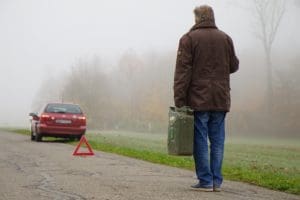Whether it’s doing the school run, driving to work, heading off on holiday or visiting friends and family over Christmas, driving in winter can be difficult, particularly when there’s snow and ice to contend with. Here are our top tips to help you have a safe journey.
It goes without saying that you need to be more careful driving in hazardous conditions. Remember too that you don’t only have to think about your actions but those of other drivers too.
First off, did you know, hazardous conditions or not, it is illegal to drive without car insurance?
If you haven’t got it, make sure you rectify this before you get behind the wheel. It’s easy to do and there are many places online where you can get a quote and buy, for example car insurance from Direct Line or other insurance provider sites.
Secondly whilst not having breakdown cover is not illegal, you may well want to consider making sure you have it. You’ll be most thankful should the worst happen and you breakdown on a long journey.

So, now to our 6 top winter hazardous driving tips:
- Make sure you have full visibility through your windscreen and windows. Use both the defroster and windscreen wipers to help. Make sure the wiper blades are in good condition and also add an anti-freeze liquid to the screen wash.
- Keep your distance when driving. This applies to foggy or wet conditions as well as to ice and snow. Even if the roads have been gritted you need to be careful. Keep your eye on your speed and give more warning than usual to other drivers when turning, stopping or changing lane.
- In extreme ice and snow conditions try not to stop on an upwards hill as you may find it hard to move off. Also if you car doesn’t have anti-lock brakes, pump the brakes slowly and gently to come to a stop without skidding. If you put constant pressure on the brakes it can cause them to lock and skid.
- Be extra wary of black ice and approach corners at a steady speed, in as low a gear as possible. Don’t use the clutch unless you really have to and try not to brake on the bends.
- Check your tyres. Make sure they have the right pressure in them and have enough tread – remember too little and you could be driving illegally. Make sure you have enough tread to help your grip. You may want to consider fitting snow tyres if you live in a particularly cold, snow prone part of the country.
- Be prepared. It’s not just about having breakdown cover aswe touched on above, but also ensuring you have warm clothes, emergency rations and perhaps a spade in the boot to help should you find yourself caught out in bad weather, particularly in bad snow.
And a final note, which may be obvious, but if the weather really is too hazardous the best advice is to stay indoors, keep warm and venture out on another day!